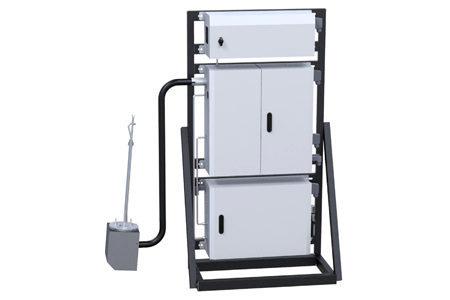Dust monitor is mainly used to detect dust concentration in the environment. At present, people have higher and higher requirements for living and working environment, so that the sales of dust monitor has increased dramatically. More and more people pay attention to this industry of environmental protection.
The working of a dust monitor is mainly based on the principle of microcomputer laser and the principle of electrostatic induction.
When light irradiates the particles suspended in the air, scattered light is produced. Under the certain properties of particles, the scattered light intensity of particles is directly proportional to their mass concentration. The mass concentration of particles can be obtained by measuring the scattered light intensity and applying the mass concentration conversion coefficient K.
When the dust particles flow through the probe, the signal is generated by the induction between the dust particles and the dynamic charge. AC electrostatic technology determines the disturbance of AC signal by monitoring the standard deviation of charge signal, and determines the dust emission by the magnitude of instant disturbance.

1. Applicable to the measurement of dust concentration in the production site of industrial and mining enterprises
2. Monitoring of inhalable particles in public places of health and epidemic prevention station
3. Air dust detection of environmental protection monitoring department
4. Investigation of pollution sources
5. Field test in scientific research, filter material performance test, etc
6. On-site dust concentration measurement and dust concentration monitoring at exhaust port
7. Drug manufacturing test
8. Occupational health and safety testing
9. Various research institutions of meteorology, public health, industrial labor and health engineering, and air pollution research
10. Dust detection in the place of building or blasting; site exposure monitoring
11. Indoor air quality inspection